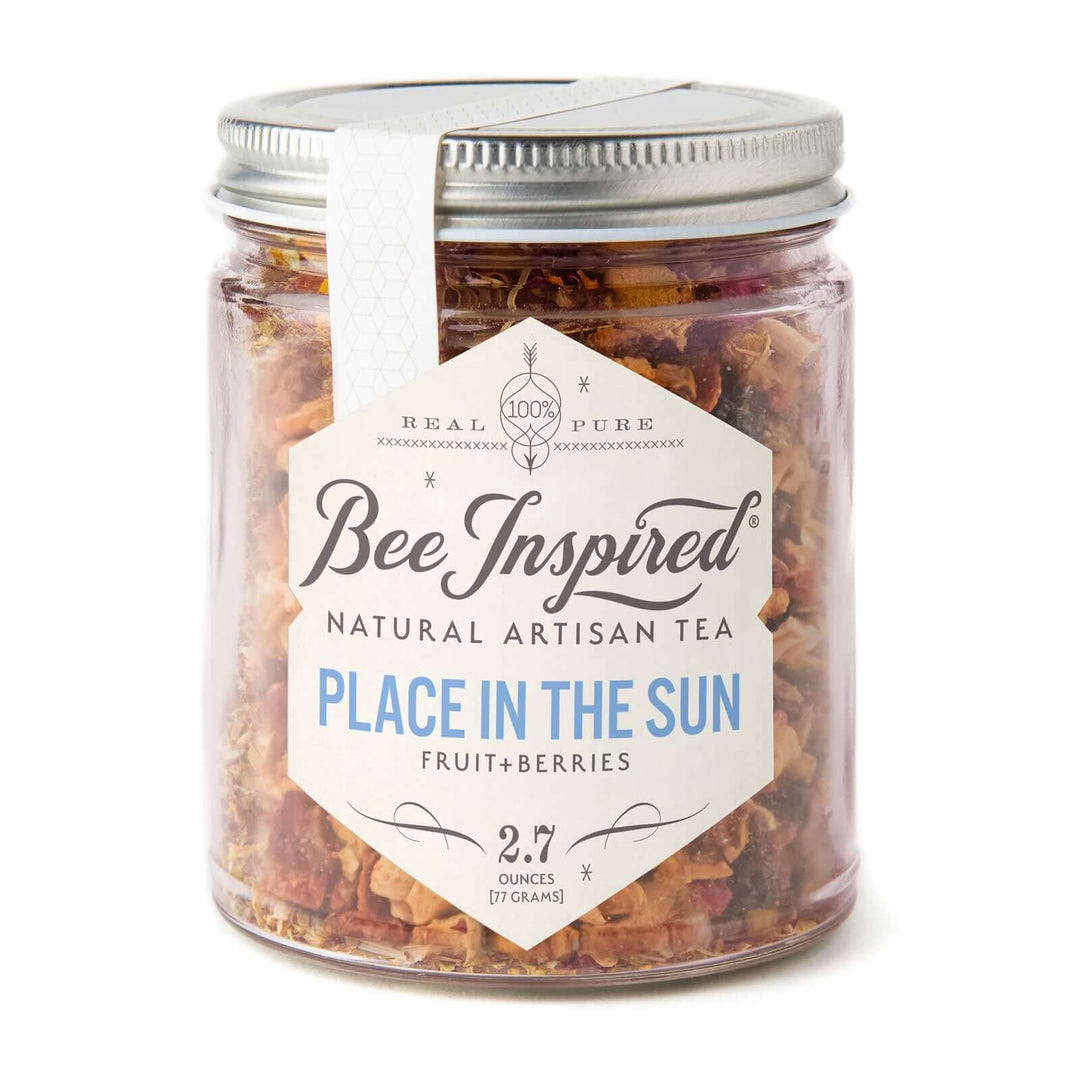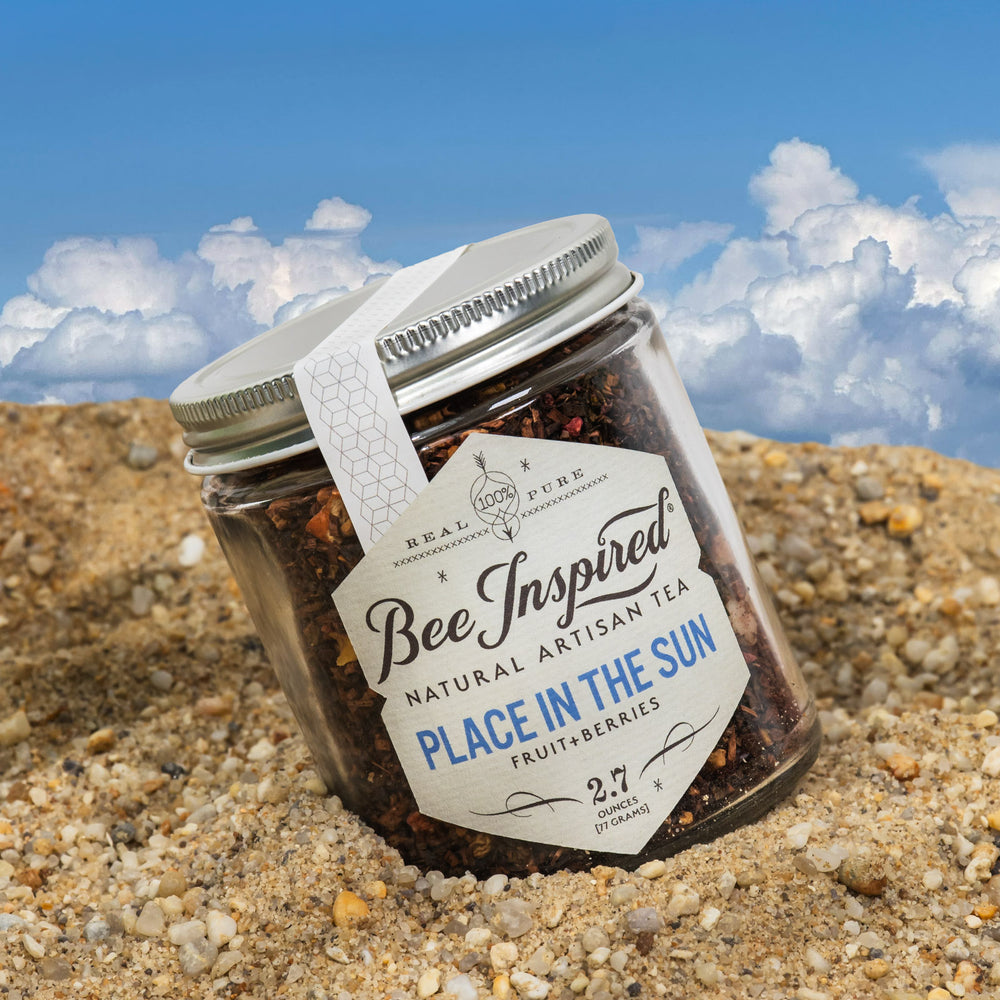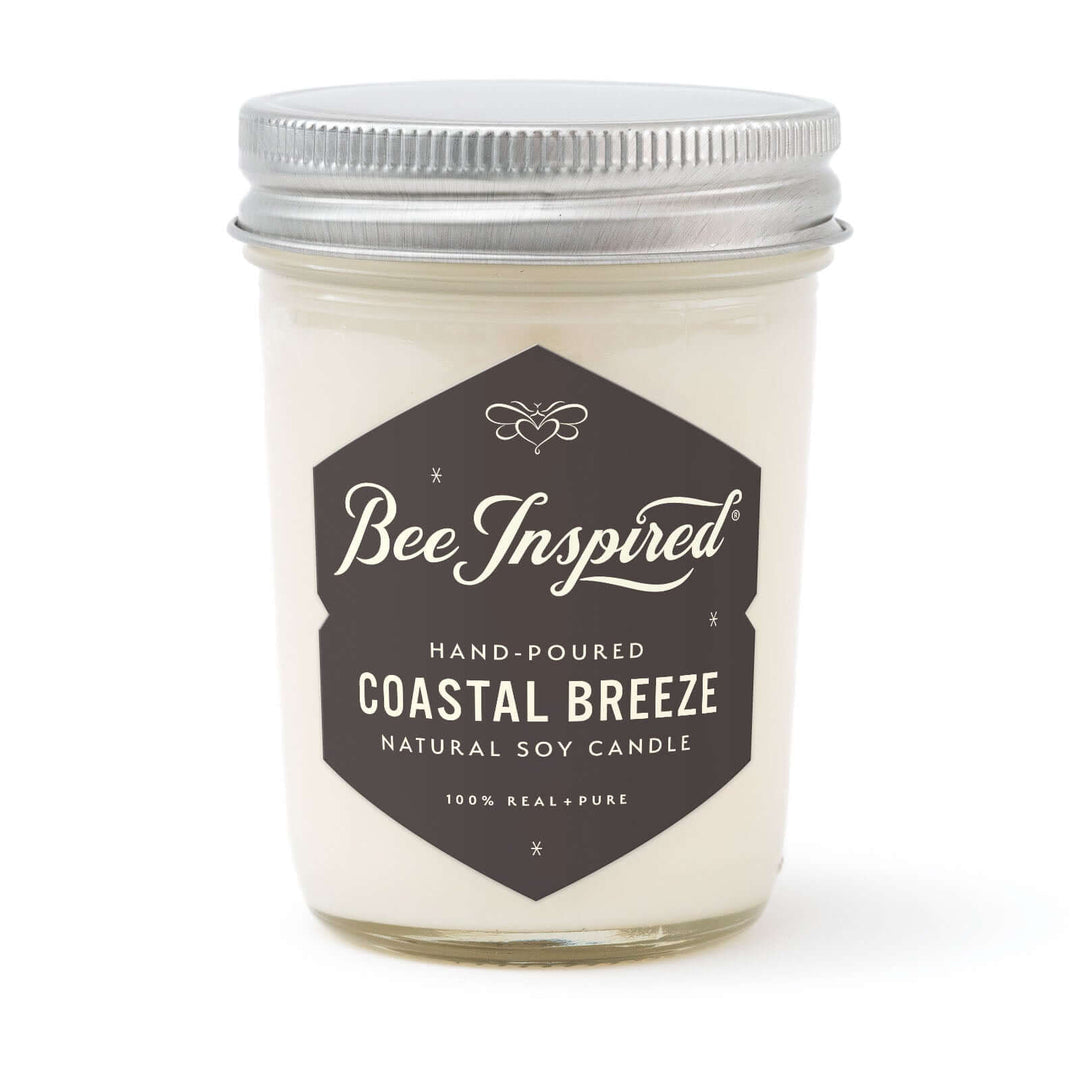Imagine the delightful aroma of lavender wafting through the air on a warm summer day—it's pure bliss, isn't it? If you've ever envisioned gathering bunches of these fragrant purple flowers from your garden, you're in the right place.
Gardeners in Maryland, consider yourselves fortunate! The state's mild climate and extended growing season provide the ideal environment for lavender to flourish. Evidence of this can be seen at our Chesterhaven Beach Farm, where countless lavender plants reach for the sun, buzzing with grateful pollinators, eventually becoming part of our cherished Peace of Mind Collection.
But even if you're nurturing just a few bushes in your backyard, the enchanting process of harvesting lavender flower buds remains the same, whether you're managing a sprawling field or a cozy container garden.
Eager to transform those aromatic stems into dried bouquets, culinary treats, or homemade sachets? Allow me to guide you through the when, how, and why of lavender harvesting, a skill I've honed over years of caring for these aromatic wonders. The best time to harvest lavender is in the morning after the dew has evaporated, ensuring the flowers are at their most fragrant and ready for use.

Before you go to harvest lavender, drink a cup of Good Morning Tea to start your day energized!
Selecting the Ideal Lavender Varieties
Before diving into harvesting techniques, it's essential to recognize the differences among common lavender varieties. Understanding these distinctions will not only enhance your gardening experience but also ensure you maximize your lavender harvest. Each variety possesses unique traits that impact their fragrance, appearance, and optimal uses, making it crucial to choose the right type for your specific needs.
Moreover, deciding between English, French, and Spanish lavender can greatly influence the quality and quantity of the lavender products you can create. English lavender is particularly valued for its sweet aroma and culinary versatility, while French lavender is favored for its intense fragrance and decorative appeal. Spanish lavender offers a distinctive floral appearance and is often used for ornamental purposes.
By familiarizing yourself with these varieties, you can tailor your lavender cultivation and harvesting practices to meet your desired outcomes, whether it's for crafting fragrant essential oils, culinary creations, or stunning garden displays. This knowledge will also assist you in determining the optimal time to harvest each type, enhancing the potency and quality of the harvested lavender flowers.

English Lavender (Lavandula angustifolia)
- Robust and compact
- Light purple flowers with a sweet, floral aroma
- Ideal for culinary applications (cakes, cookies, teas)
- Retains color and scent well when dried
- Perfect for crafts, potpourri, and sachets
French Lavender (Lavandula stoechas)
- Bright purple flowers with a strong, pungent scent
- Excellent for essential oil production
- Adds dramatic visual appeal to gardens
- Best for aromatherapy and perfumery uses
Choose English lavender for its subtle culinary flavor or French lavender for its intense fragrance for oils or visual impact in your garden.

Enjoy the smell of lavender? Get our French Lavender Luxe Soy Candle!
English Lavender vs. French Lavender: Key Differences
When deciding between English lavender (Lavandula angustifolia) and French lavender (Lavandula stoechas), understanding their key differences can help you make the best choice for your garden and intended uses.
English Lavender (Lavandula angustifolia)
- Appearance: Compact growth with light purple flowers.
- Fragrance: Sweet, floral scent, ideal for culinary and medicinal uses.
- Harvesting: Best harvested in early summer when flowers are fully bloomed.
- Drying: Retains color and fragrance well, making it perfect for crafts, potpourri, and sachets.
French Lavender (Lavandula stoechas)
- Appearance: More upright growth with vibrant purple flowers.
- Fragrance: Strong, pungent aroma, excellent for essential oil production.
- Harvesting: Typically harvested in late summer or early fall as flowers begin to fade.
- Drying: Less prone to drying out compared to English lavender, making it suitable for ornamental and craft purposes.
By understanding these differences, you can select the right lavender variety to suit your needs, whether it’s for culinary delights, fragrant essential oils, or stunning garden displays.

Do you know what the top butterflies in Maryland are?
Growing Lavender for Harvesting
Cultivating lavender for harvesting requires attention to the plant’s specific needs to ensure a bountiful and fragrant harvest. Lavender plants thrive in well-draining soil, full sun, and moderate watering. For those aiming to maximize their lavender harvest, understanding and implementing the right growing conditions is key. Lavender prefers a sunny location with at least six to eight hours of direct sunlight daily, which helps in enhancing the essential oil production in the flowers. The soil should be slightly alkaline, with a pH between 6.5 and 8.0, and incorporating sand or gravel can improve drainage, preventing root rot. Overwatering can be detrimental, so it’s crucial to water deeply but infrequently, allowing the soil to dry out between waterings. Additionally, providing adequate spacing between plants not only improves air circulation, reducing the risk of fungal diseases, but also allows each lavender plant to reach its full potential, resulting in more abundant blooms. Here’s how to create the perfect environment for your lavender plants:
- Soil Preparation: Lavender requires well-draining, slightly alkaline soil with a pH between 6.5 and 8.0. Incorporate sand or gravel into heavy soils to improve drainage. Adding limestone to acidic soils can help achieve the optimal pH level. Poor drainage leads to root rot, which is the most common cause of lavender failure.
- Sunlight Requirements: Provide at least 6-8 hours of direct sunlight daily. Lavender plants grown in insufficient light produce fewer flowers and less fragrant oil. Southern or western exposures typically offer ideal light conditions.
- Watering Practices: Water deeply but infrequently to encourage deep root development. Established lavender plants are drought-tolerant and prefer drier conditions. Overwatering is more harmful than underwatering for lavender. During the first growing season, water regularly until plants establish strong root systems.
- Spacing Considerations: Plant lavender with adequate spacing (18-24 inches apart for small varieties, 24-36 inches for larger types) to ensure proper air circulation, which prevents fungal diseases and allows each plant to reach its full potential.
- Pruning Regimen: Regular pruning promotes bushier growth and more flower production. Prune lightly after the first flowering and more heavily in early spring before new growth appears. Never cut into the woody base of mature plants.
- Fertilization: Lavender thrives in lean soil and requires minimal fertilization. A light application of balanced, slow-release fertilizer in spring is sufficient. Excessive fertilizer produces lush foliage at the expense of flower production.
- Wind Protection: While lavender tolerates windy conditions, providing some shelter from harsh, prevailing winds helps protect delicate flowering stems, especially for taller varieties.
- Winter Care: In colder regions, mulch around plants with gravel or sand (not organic mulch) to protect roots during winter months. Good drainage becomes even more critical during winter to prevent root damage from freezing and thawing cycles.
By addressing these fundamental needs, you'll create ideal growing conditions that maximize both the quantity and quality of your lavender harvest, ensuring robust plants with concentrated essential oils and vibrant flowers.

Ever wonder what bees do in the winter?
When to Harvest Lavender
Timing is crucial for harvesting lavender successfully to ensure high-quality flowers and oils. Understanding the best time to harvest is essential for obtaining the highest quality products. Lavender should ideally be cut when about one-third to one-half of the flowers on each stem have opened for essential oils. Timing your harvest during early bloom cycles and in the morning can optimize fragrance and essential oil content. Early spring harvesting can also encourage further blooming.
Best Time of Year
- In Maryland and similar climates: Harvesting lavender is best in early summer (late June through early July)
- For essential oil production: Harvest when flowers are partially open
- For dried flowers: Harvest when flowers are fully open but not yet wilted
Signs Your Lavender Flowers are Ready to Harvest
- Light purple flowers with deeper purple tips
- Stems that snap cleanly when bent
- Peak aroma intensity
Best Time of Day
- Early morning after the dew has dried
- Before the day’s heat intensifies
- If it’s particularly hot, harvest before sunrise

Our Peace of Mind Body Care Duo gives your skin gentle exfoliation with intense hydration
What You'll Need When Harvesting Lavender Plants
Gather these simple tools before you begin:
- Sharp, clean pruning shears or scissors
- Basket or container to collect stems
- Twine or thick rubber bands for bundling
- Paper clips (for hanging)
- A cool, dry, dark space for drying

Our Spring Honey is absolutely delicious!
Step-by-Step Instructions for How to Harvest Lavender
- Prepare your tools: Ensure scissors or pruners are clean and sharp.
- Identify the correct cutting point: Look for the woody part of the stem where new growth emerges. Cut the lavender stems just above the first set of leaves, leaving green growth on the plant to encourage healthy regrowth.
- Make the proper cut: Position your pruners about 2-3 inches above the woody base, leaving some foliage intact. Cut at a slight angle just above a leaf node. To harvest lavender buds, ensure the stems snap when bent and collect them when the buds are ready.
- Use strategic pruning technique: This precise cutting location encourages the plant to branch out, potentially doubling your future harvest. To harvest lavender, select and cut the stems when the buds begin to bloom to optimize growth and ensure a good yield of blooms.
- Create bundles: Gather 15-20 stems and secure them at the base with twine or a rubber band. Don’t make bundles too thick, or they won’t dry properly.
Important: Never cut into the woody base or too close to the ground, as this can damage the plant’s root system and prevent regrowth.

Our Lavender Honey Lollipops contain real lavender buds inside
How to Cut Stems when Harvesting Lavender
Cutting lavender stems correctly is crucial for maintaining plant health and ensuring a high-quality harvest. Follow these steps to harvest lavender stems effectively:
- Tools: Use sharp, clean pruning shears or scissors to make precise cuts. Sharp bypass pruners are particularly effective for cutting the long flower stems.
- Cutting Point: Identify the node just above the woody part of the stem where new growth emerges.
- Cutting Technique: Cut the stems at a slight angle, about 2-3 inches above the woody base, leaving some foliage intact. This encourages the plant to regrow and produce more blooms.
- Tools: Use sharp, clean pruning shears or scissors to make precise cuts.
- Cutting Point: Identify the node just above the woody part of the stem where new growth emerges.
- Cutting Technique: Cut the stems at a slight angle, about 2-3 inches above the woody base, leaving some foliage intact. This encourages the plant to regrow and produce more blooms.
For culinary and medicinal uses, harvest lavender stems when the lavender flowers are in full bloom and the buds are fragrant. For ornamental and craft purposes, wait until the flowers have begun to fade and the stems are dry. This ensures you get the best quality lavender for your specific needs.
Bundling and Handling Cut Lavender
Properly bundling and handling cut lavender is essential to preserve its fragrance and color. Here’s how to do it:
- Bundling: Gather 15-20 stems and tie them together at the base with twine or a rubber band. Ensure the bundles are not too thick to allow for proper drying.
- Handling: Handle the stems by the base to avoid damaging the delicate flower buds. Minimize touching the flowers to preserve the fragrant essential oils.
- Hanging: Hang the bundles upside down in a warm, dry, dark place with good air circulation. This helps the lavender dry evenly and retain its vibrant color and scent.
By following these steps, you’ll ensure your harvested lavender remains fragrant and beautiful, ready for use in various applications.

For the ultimate lavender gift, get the Lavender Experience Set
Drying Your Lavender
- Create a simple drying rack: Install hooks in the ceiling of a cool, dark, dry room. Attach a single row of chain links from the ceiling hooks.
- Prepare bundles for hanging: Insert a paper clip under the rubber band as a hook for hanging.
- Hang bundles upside down: Suspend your lavender bundles stem-side up in your drying area. Lavender flowers are versatile and can be used in sachets for scenting spaces and promoting relaxation.
- Allow proper drying time: The process typically takes 1-2 weeks, depending on humidity levels.
-
Check for dryness: Your lavender is fully dried when:
- Stems snap cleanly rather than bend
- Flowers feel crisp to the touch

Try lavender tea with our Raven Earl Grey + Lavender Tea
Methods for Drying Lavender: Air Drying, Dehydrating, and More
Drying lavender is a crucial step in preserving its fragrance and color. Here are several methods to dry lavender effectively:
Air Drying
- Preparation: Tie the stems into small bundles using twine or rubber bands.
- Hanging: Hang the bundles upside down in a warm, dry, dark place with good air circulation.
- Drying Time: Allow the lavender to dry for 2-4 weeks, or until the flowers are completely dry and fragrant.
Dehydrating
- Equipment: Use a food dehydrator set to 95-105°F (35-40°C).
- Arrangement: Place the stems in a single layer on the dehydrator tray.
- Drying Time: Dehydrate for 1-2 hours, or until the flowers are completely dry and fragrant.
Using a Food Dehydrator
- Preparation: Place the stems in a single layer on the dehydrator tray.
- Temperature: Set the dehydrator to 95-105°F (35-40°C).
- Drying Time: Dehydrate for 1-2 hours, or until the flowers are completely dry and fragrant.
Regardless of the method used, it’s essential to dry lavender in a way that preserves its fragrance and color. Avoid exposing the flowers to direct sunlight or moisture, and store the dried lavender in a cool, dark place to maintain its potency.

Our Peace of Mind Massage Candle provides much needed relaxation
Processing Dried Lavender
Once your lavender is completely dry:
- Lay down a clean sheet, tarp, or paper to catch the lavender buds.
- Roll the bundles between your hands over the sheet. You can also gently shake or crunch the bundles to remove the most buds.
- Sift through the collected buds and remove any stems, leaves, or other plant material.
- Store dried lavender buds in an airtight container in a cool, dark place. For maximum freshness, some gardeners store dried buds in the freezer.

Bake a Lavender Lemon Honey Cake for a delicious treat
Multiple Harvests in One Season
Yes, you can harvest lavender multiple times if you have healthy, established plants:
- After the initial full-bloom harvest, trim the plant back by one-third. Pruning lavender is a crucial part of its care, typically occurring once or twice a year, after flowering.
- This pruning encourages regrowth and may produce a second or third harvest later in the season. Proper pruning techniques promote healthy growth and longevity of the lavender plant.
- For the final harvest of the year, cut the spikes close to the plant, shaping it into mounds to prepare for winter.
- Always ensure enough time before the first frost for new growth to develop.

Our Lavender Baby Oil is gentle enough to use on baby skin
Uses for Your Harvested Lavender
Once dried, your lavender can be used in countless ways:
- Aromatherapy: Essential oils, sachets, potpourri. Harvesting fresh lavender flowers at the right time ensures maximum yield and quality, enhancing their aromatic qualities. Lavender essential oil is versatile, with applications in aromatherapy, homemade skincare, and cleaning solutions.
- Culinary: Teas, baked goods, cocktails, herb blends. Lavender can also be used to flavor honey, lemonade, and teas, adding a unique floral note to these creations.
- Home: Fragrant decorations, wreaths, dried arrangements
- Self-care: Bath products, sleep aids, natural remedies

Our Lavender Flower Water is made with distilled lavender from Kara's farm
Final Tips for Harvesting Lavender
- Be gentle with French and Spanish lavender varieties during processing, as they can be more delicate.
- Consider harvesting only a portion of your plants at a time, leaving some blooms for bees and butterflies.
- For the healthiest plants, always leave some green growth when cutting.
With these simple techniques, you'll be able to enjoy the soothing benefits of lavender long after the growing season ends.












